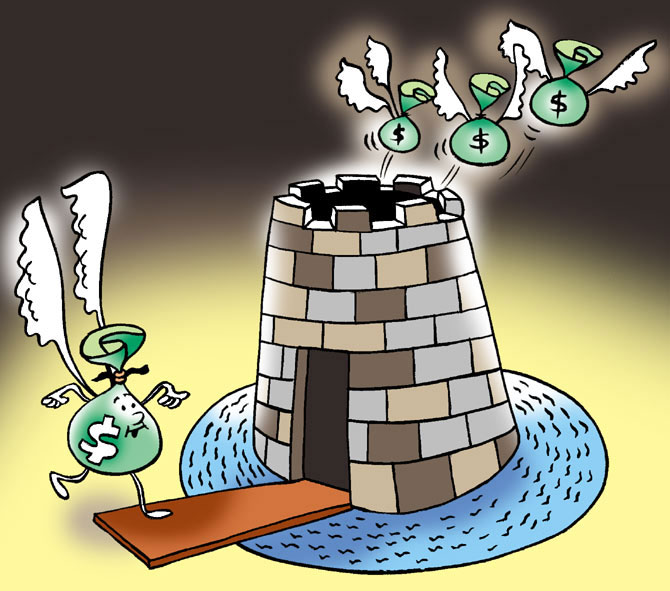
Painting an optimistic picture on the external front, the Reserve Bank has said the country is ready for the US Federal Reserve's tapering, and has pegged the current account deficit at below 3 per cent for this fiscal in its eighth Financial Stability Report.
"External sector risks have been considerably reduced and the effect of the tapering on the economy is expected to be limited and short-lived," the report released on Monday said.
Delay in the tapering of the $85 billion-a-month bond buyback programme by the US Fed (tapering will start from January 1) gave the country time to replenish the forex reserves and rein in the high current account gap.
. . .

In the third week of December, the US Fed announced that it would cut back bond buying by $10 billion a month to $75 billion from January on the back of improvement in the world's biggest economy.
"The CAD is expected to be less than 3 per cent of the gross domestic product during the current financial year," the RBI said in the half-yearly report.
"On balance, the country's external position appears to be manageable and reserves seem adequate."
CAD shot up to an all-time high of 4.8 per cent last year on account of a heavy trade deficit and higher gold imports.
The high CAD, along with fears of tapering, was one of the reasons for the rupee touching a lifetime low of 68.85 against the dollar on August 28 this year.
. . .

The rupee improved since then, but is still 14 per cent lower year-to-date.
The authorities acted on multiple fronts, curbing gold imports, opening currency swap windows to get fresh dollar flows, and increasing money market rates to reduce speculation.
All of these resulted in the CAD coming down to 1.2 per cent of gross domestic product in Q2 and the exchange reserves rallying for six weeks till mid December at over $295 billion as of last week.
The biggest leveller had been a drastic fall in gold imports and the $34 billion that RBI could gross by way of the two dollar swap windows.
. . .

On the rupee front, the RBI report also acknowledged the role played by the offshore markets, saying there is an increase in the offshore turnover of emerging market currencies in the last few years.
The report, however, stresses that the long-term solution to the external sector problems for the country lies in increasing the productivity and the export competitiveness.
It said the inflation differential between the advanced economies and the emerging ones like India is a potential source of volatility in the exchange rates as capital flows could abruptly change directions.
However, it took note of the fact that the measures announced since September have contained volatility in the forex market.